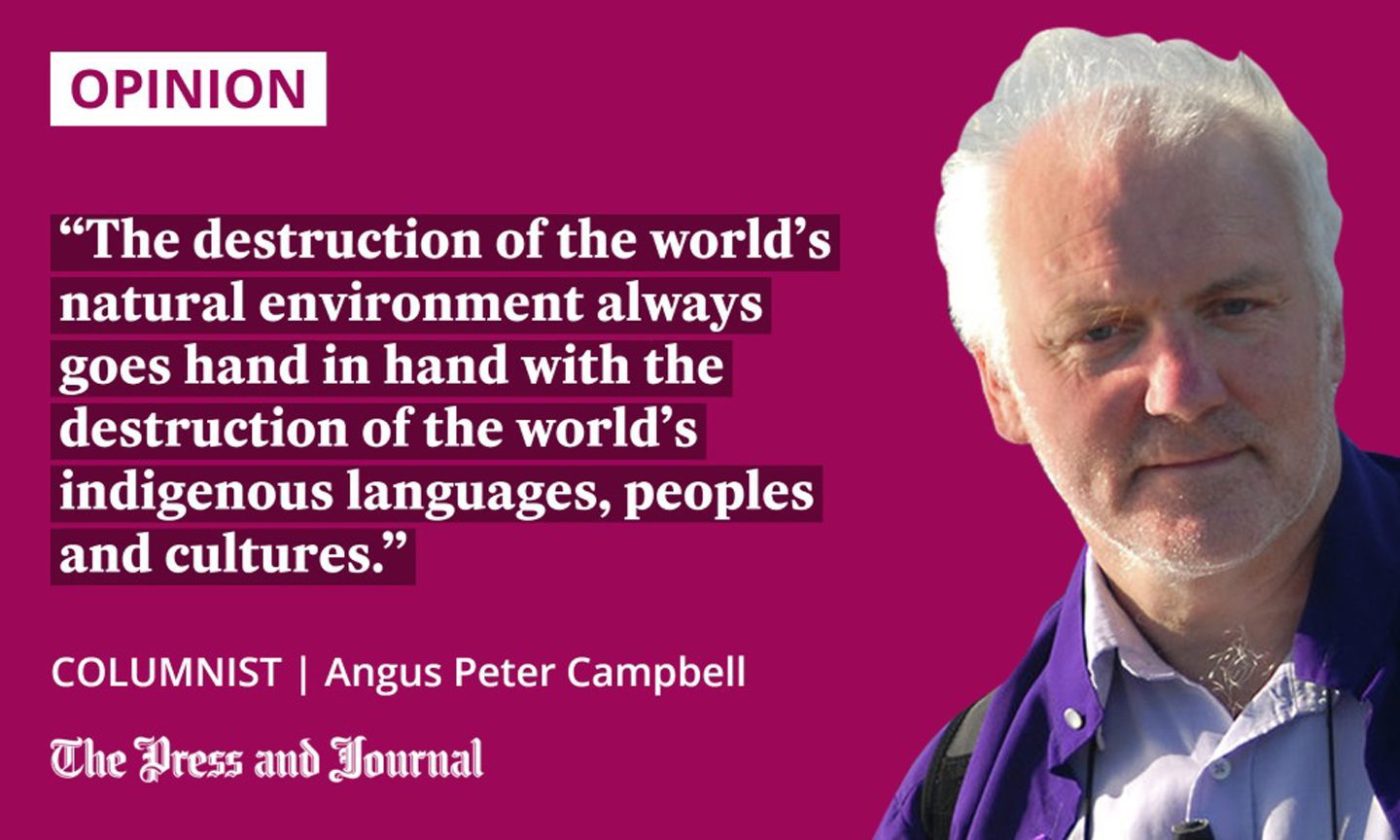The number of Welsh speakers has fallen to an all-time low, and it doesn’t bode well for the future of Gaelic in Scotland, writes Angus Peter Campbell.
I was disappointed to read that the number of Welsh speakers has fallen to an all-time low.
The statistics were revealed a few weeks ago, when census results for England and Wales were published. Due to the later census-gathering stramash in Scotland, our results won’t be revealed until sometime later this year. They’re aw oot o’ step but oor Jock, as they say in Holyrood.
The Welsh figures reveal that on census day (March 21, 2021), an estimated 538,399 Welsh citizens aged three and over were recorded as being able to speak Welsh – about 17.8% of the population. That’s a decrease of 23,700 people since the last census of 2011, and a drop of 1.2% over those 10 years. A century ago, 37% of residents spoke Welsh.

Now, I’m not sure if these Welsh figures bode ill for Scottish Gaidhlig necessarily, but they don’t fill me with any great confidence. I know that there are some similarities, as well as vast differences, between the two language situations, though one thing is certain: that all the world’s “minority languages” are in a perilous position.
Over 7,000 languages are spoken across the world today, ranging from the most spoken language in the world (English), with more than 1.4 billion people using it daily, to the Taushiro language of the Peruvian Amazon near Ecuador, with only one remaining native speaker alive, Amadeo Garcia Garcia.
The destruction of the world’s natural environment always goes hand in hand with the destruction of the world’s indigenous languages, peoples and cultures.
Centuries of linguistic destruction
In Scotland, that linguistic destruction has been happening for centuries. My good friend, the late, great Gàidhlig scholar, Dr John MacInnes of Raasay, traced the state’s official assault against the language back to the 11th century.
Queen Margaret of Scotland (also known as St Margaret of Scotland) moved her religious allegiance away from the Celtic/Columbine church to the Roman one, shifting the language emphasis in Christian Scotland away from its Irish/Gaelic roots to Latin. The compass was set eastwards, as it were.
Although Gaidhlig survived and thrived as the language of power and discourse for some centuries after (especially in the territories run by the Lordship of the Isles), by the mid-1300s, English in its Scottish form (what eventually became knows as Scots) emerged as the official language of government and law in Edinburgh.
Alongside came an emerging and stated perception that Gaidhlig was the language of the uncivilised wild west, which (almost by definition) should therefore be eradicated, and the people who spoke it tamed, properly educated and civilised.
As the great 14th-century chronicler John of Fordun put it: “The highlanders and people of the islands, on the other hand, are a savage and untamed nation, rude and independent, given to rapine, ease-loving, clever and quick to learn, comely in person, but unsightly in dress, hostile to the English people and language, and owing to the diversity of speech, even to their own nation, and exceedingly cruel.
“They are, however, faithful and obedient to their king and country, and easily made to submit to law, if properly governed.”
And so it proved. Through the Statutes of Iona, passed in Scotland in 1609, the “rebellious” Highland Scottish clan chiefs were required to send their heirs to Lowland Scotland, to be educated in English-speaking Protestant schools. Erse and Popery, as they put it, could be erased in one fell swoop.
Our million Gaelic learners are a marvel
The Education Act of 1872 almost finished off the deracination process, further aided by the clearing of thousands of indigenous people during the terrible evictions of the 19th century, the horrendous losses suffered during World War One, and the great diaspora that ensued, as people subsequently left their native lands to seek a new life in Australia, Canada and America.
Just as potatoes and roses grow in well-looked-after soil, so do languages
It’s a wonder we’ve survived at all. A marvel that 1.1% of Scotland’s population – 58,000 people – aged three and over were able to speak Gàidhlig when the last census was taken in 2011.
It’s a marvel that over a million people are currently learning Gàidhlig through Duolingo. That young people in particular consider the language as a fundamental part of the world’s ecosystem: as important to the world’s wellbeing and diversity as clean water, fossil-free energy, butterflies, snowdrops and eagles.
Once the new census figures are published, we will know the current statistics in relation to Gaidhlig in Scotland. But it’s never just about figures and numbers and statistics. It’s also about vitality.
Just as potatoes and roses grow in well-looked-after soil, so do languages. They thrive in homes and shops and pubs and churches and cafes, not (merely) in classrooms and online.
A thousand colourful plastic roses can never replace the fragrance and beauty of a single natural one, growing on a prickly thorn by the roadside.
Angus Peter Campbell is an award-winning writer and actor from Uist



Conversation